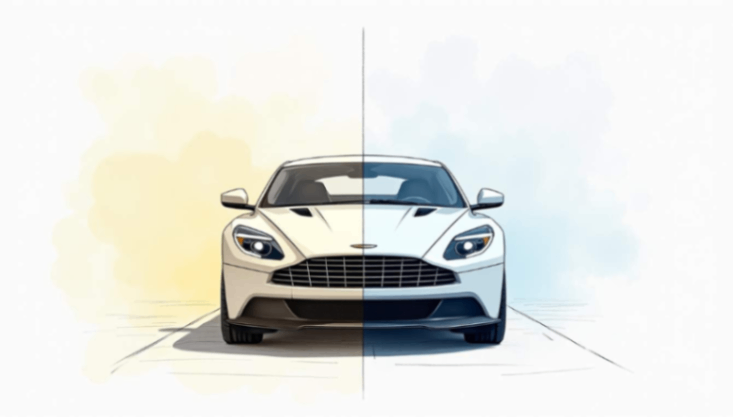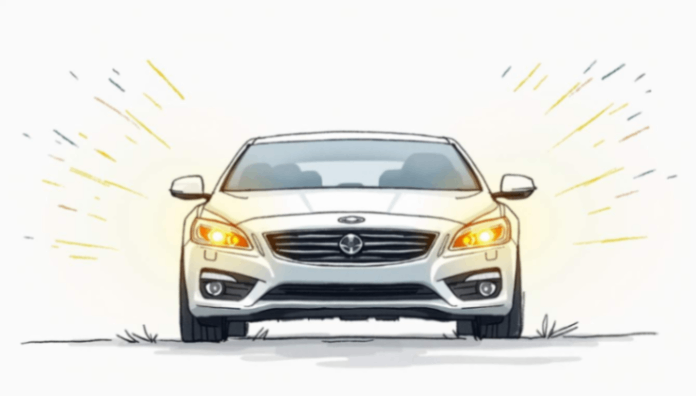In the realm of automotive lighting, two prominent options that often emerge in discussions are LED (Light Emitting Diode) and HID (High-Intensity Discharge) lighting. Both technologies offer distinct advantages and drawbacks, making it essential to understand each one before making a decision.
Understanding the Basics of Vehicle Lighting
Vehicle lighting plays a critical role in ensuring safety, performance, and aesthetic appeal. Proper lighting helps drivers see and be seen, especially in low visibility conditions, such as at night or during inclement weather. Understanding the fundamental differences between lighting technologies is vital for making an informed choice. The right lighting not only enhances visibility but also contributes to the overall design of the vehicle, making it a crucial consideration for both manufacturers and consumers alike.
What is LED Lighting?
LED lighting utilizes semiconductor technology to produce visible light. Light is emitted when an electric current passes through a diode, making it incredibly energy-efficient compared to other light sources. LED lights are known for their long lifespan, robust construction, and minimal heat generation. They can come in various colors and intensities, allowing for customization. This versatility is particularly beneficial for drivers who wish to personalize their vehicles or enhance their visibility on the road.
Furthermore, LEDs are often praised for their instant-on capability, which means they reach full brightness almost immediately when powered on. This characteristic enhances visibility and reaction time for drivers, making them an appealing choice for various applications in vehicles. Additionally, LED technology has advanced to include adaptive lighting systems that can adjust the beam pattern based on driving conditions, further improving safety and performance. As a result, many modern vehicles are now equipped with LED headlights, tail lights, and interior lighting, reflecting a growing trend toward energy-efficient solutions in the automotive industry.
What is HID Lighting?
HID lighting, on the other hand, operates by passing an electric current through gas, typically xenon, within a sealed bulb. This process creates a bright arc of light. HID lights are renowned for their intensity, providing significantly brighter illumination compared to traditional halogen bulbs. They are often used in higher-end vehicles and are synonymous with performance and luxury. The crisp, white light produced by HID systems closely resembles natural daylight, which can reduce eye strain and improve visibility on dark roads.
An important aspect of HID technology is the range of light they emit, which can significantly enhance night driving visibility. However, HID lights do take a moment to reach their full brightness, which can be a drawback when immediate illumination is necessary. Moreover, the installation of HID lighting systems often requires specific housing and reflectors to ensure optimal performance and avoid glare for oncoming drivers. As such, while they offer remarkable brightness and clarity, proper installation and alignment are crucial to maximize their benefits and maintain road safety.
The Pros and Cons of LED Lights for Vehicles
When considering lighting options for your vehicle, it is essential to weigh the advantages and disadvantages of LED lights. Their growing popularity within the automobile industry stems from specific benefits that resonate with many users. As technology continues to evolve, LED lights are becoming more sophisticated, offering features that enhance both performance and aesthetics. Moreover, the environmental impact of choosing LED lighting is a significant factor for many consumers, as these lights contribute to a reduction in overall energy consumption.
 lights have gained popularity for their unique characteristics, but it's essential to weigh their benefits against potential drawbacks before making a decision.
Advantages of HID Lights
- Brightness: HID lights offer a brighter light output, significantly improving visibility on dark roads. This enhanced brightness not only aids in spotting obstacles but also helps in recognizing road signs and markings from greater distances.
- Color Temperature Options: These lights come in various color temperatures, allowing users to choose the shade that works best for them. Ranging from a warm yellow to a cool blue, the color temperature can also affect how well the driver perceives colors at night, making it easier to distinguish between different objects.
- Wider Beam Pattern: HID lights typically provide a more extensive beam pattern than halogen, illuminating more of the road. This wider coverage can be particularly advantageous in rural areas where streetlights are sparse, ensuring that drivers have a clearer view of their surroundings.
Disadvantages of HID Lights
- Lifespan: While HID lights last longer than halogen (about 2,000 hours), they usually don't match the longevity of LEDs. This shorter lifespan can lead to more frequent replacements, especially for drivers who use their vehicles extensively at night.
- Warm-Up Time: The time it takes for HID lights to reach full brightness can hinder immediate visibility. During critical moments, such as when pulling out of a driveway or merging onto a busy road, this delay can be a safety concern.
- Maintenance Costs: Replacement costs can add up due to ballast requirements and other components, which may need servicing. Additionally, the complexity of HID systems can lead to higher labor costs if professional installation or repairs are necessary.
Moreover, it's important to consider the legal implications of using HID lights. In some regions, improperly installed or excessively bright HID lights can lead to fines or vehicle inspections, as they may dazzle oncoming drivers. Proper alignment and installation are crucial to ensure that the lights provide optimal performance without causing safety hazards for others on the road. Furthermore, the environmental impact of HID lights should not be overlooked; while they are more efficient than traditional halogen bulbs, their production and disposal can have ecological consequences that are worth considering for the environmentally conscious driver.
In addition to these factors, the aesthetic appeal of HID lights can also play a role in their popularity. Many car enthusiasts appreciate the modern look and the ability to customize their vehicle's appearance with different color temperatures. This visual upgrade can enhance the overall style of a vehicle, making it stand out on the road. However, potential buyers should also be aware of the importance of selecting high-quality HID kits, as inferior products may not only perform poorly but could also lead to electrical issues or damage to the vehicle's wiring system.
Comparing LED and HID Lighting for Vehicles
Both LED and HID technologies present unique features that can influence a driver's choice when upgrading their vehicle's lighting. A comprehensive comparison across various factors can aid this decision process significantly.

Performance Comparison
In terms of performance, HID lights generally outperform LEDs in brightness and range, making them exceptional for night driving. However, LEDs excel in instant brightness and energy efficiency, making them suitable for city driving.
Cost Comparison
While LEDs often have a higher upfront cost, their energy savings and longevity can make them more economical long-term. Conversely, HID lights may seem cheaper initially, but the higher maintenance costs can quickly escalate the overall expense.
Longevity Comparison
LEDs clearly dominate in longevity, with lifespans often exceeding 20,000 hours, while HIDs may last around 2,000 hours before needing replacement. Thus, if longevity is a primary concern, LEDs are the superior choice.
Making the Right Choice for Your Vehicle
Choosing the right lighting for your vehicle involves considering several factors that pertain not only to personal preference but also to practical application.

Factors to Consider When Choosing Vehicle Lighting
- Driving Conditions: Understanding the environments where you will be driving can influence your decision. Rural roads may benefit from the brightness of HID lights, whereas urban settings could be better suited for LEDs.
- Budget: Determine how much you are willing to spend initially and consider the long-term costs associated with each choice.
- Vehicle Compatibility: Some vehicles are better designed to accommodate certain types of lights. Ensure that whatever option you choose is compatible with your vehicle make and model.
The Impact of Vehicle Type on Lighting Choice
The type of vehicle you drive can significantly impact your choice of lighting. For instance, luxury vehicles often come equipped with HID lights due to their performance appeal, while compact cars may benefit from the efficiency and durability of LEDs. Moreover, off-road vehicles might require robust lighting systems, specially suited for rugged conditions and terrain.
In conclusion, both LED and HID lighting bring unique strengths and weaknesses to the table. By evaluating the factors mentioned above, you can find the best lighting solution tailored to your individual needs and driving patterns.











